15 June, 2022
Cycling can be daunting for beginners, especially if you don’t know where to start. Read on to get a grip with cycling.
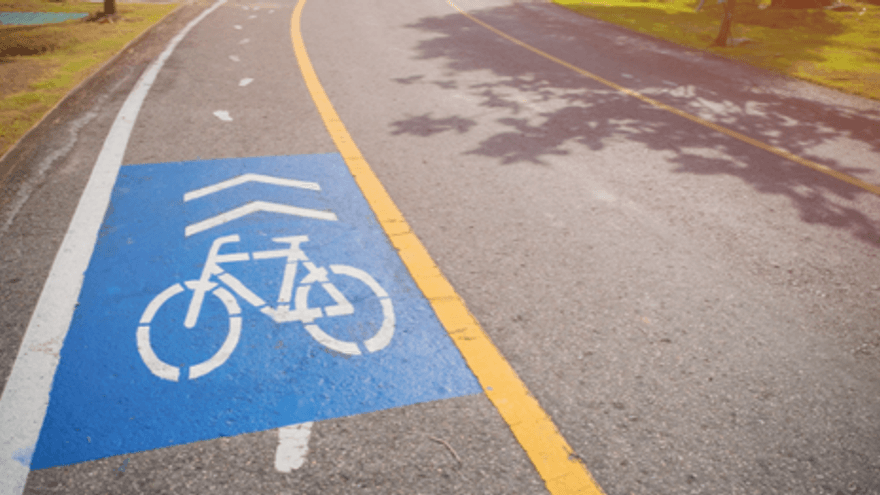
Cycling can be a great way to get around, and it's also a lot of fun. If you're new to cycling, you may have some questions about how to get started. In this blog post, we will answer some of the most common questions that beginner cyclists have as well as look at what you need to look for in your first bike, and the different parts of a bicycle and their names. We'll also talk about inner tube dimensions and tyre specifications, so you'll know exactly what to look for when purchasing cycling gear.
The Different types of Bike
There are a few core types of bike to look at and decide which type of cycling you want to enjoy. From mountain bikes to hybrid or cyclo-cross, road or BMX, here's a little overview to get you started. We haven't included things like cruisers or electric bikes in this post - we'll do that next time.
To help you decide what sort of riding you want to enjoy, you need to think about what style of riding you will be doing but also where most of your riding will take place ie smooth cycle paths, long rides, off road trails or down at your local BMX park.
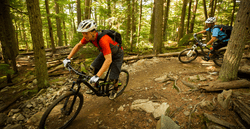
Mountain bikes are designed for cycling over rough terrain, and they typically have wider tyres with more tread to allow for greater grip in off road conditions. Mountain bikes typically have shocks to absorb the impact of bumps and roots on the trail. They also have lower gears than other bikes, which makes cycling up hills easier so you really can enjoy cycling anywhere. Of course they can be used on road too, but if you're looking at performance cycling or speed on the road, then you need a different set up.
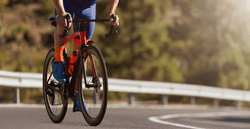
Road bikes are designed for speed and distance on paved surfaces. They usually have narrower tyres and higher gears, making them faster than mountain bikes (on road) but also a little more rigid when riding over bumpy terrain or roads. Road bikes don't have shocks, so if you're looking to ride over rougher terrain then this might not be the best choice for you.
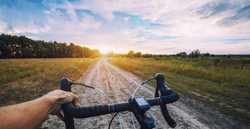
A cyclo-cross bike is a cross between a road and mountain bike. They have some of the features of each type of bike, making them versatile for a range cycling activities. For instance, they have wider tyres than road bikes but narrower tyres than mountain bikes. Cyclo-cross bikes also have higher gears than mountain bikes, making them faster on road. However, they also have lower gears than road bikes, making them easier to cycling up hills. When I first got into triathlon I purchased a cyclo-cross bike as I wanted something I could use in racing, but then a decent bike to enjoy bike rides on the trails with my little ones too.
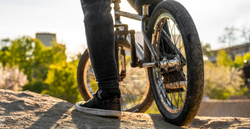
BMX bikes are designed for cycling on dirt tracks, in skate parks and doing tricks. They have smaller wheels than other bikes (20 inches is the standard) and a strong frame, which makes them durable enough to withstand the bumps and jumps of BMX riding. The handlebars are also wide to give the rider more control when cycling.
Now that we have the basics of different types of cycling covered, it's time to look at what you need to consider when purchasing your first bicycle.
There are a few key things to think about when purchasing any bicycle, but as a beginner cyclist, there are some things that you need to pay particular attention to.
The first thing to consider is the size of the bike. You don't want a bike that is too big or too small, as this will make cycling difficult and uncomfortable. To get an idea of what size bike you need, stand over the top tube of the bike (with both feet on the ground) and there should be around two to three inches between you and the tube (with BMX it is different!). If you can't touch the ground, or if the top tube is too close to your crotch, then the bike is too big. Conversely, if you have to really stretch to reach the handlebars or if you feel like you are sitting on top of the bike, then it is too small. Every good retailer will help size you up correctly and when you purchase your new bike, they will help you fit it properly so that you have a comfortable ride.
The second thing to think about is the type of cycling you want to do. As we've already discussed, there are different types of bikes for different cycling activities so if you're planning on doing a lot of mountain biking, then you need a mountain bike. If you're looking to do road cycling, then you need a road bike. It's important to get the right type of bike for the cycling that you want to do, as this will make your cycling more enjoyable (and often safer).
The third thing to consider is your budget. Bicycles can range in price from nearly free second hand or on marketplace pages, to thousands of pounds. It's important to set a budget for yourself and then stick to it. It's easy to get caught up in the moment and purchase a bike that is out of your price range, but if this is your first time, get something within budget which allows you to "upgrade" in the future.
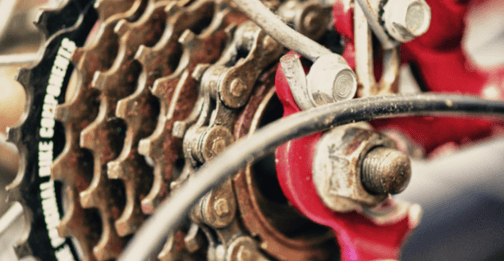
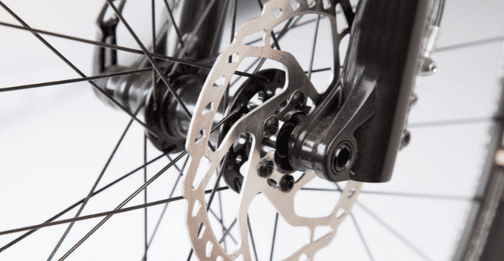
The number of gears on a bike is determined by the number of cogs on the back wheel (the cassette) and the number of front chainrings. The most common combination is a double or triple chainring at the front with an 11, 12, 13, 14, 15 or 16 cog cassette at the rear. This gives between 16 and 20 gears. The number of cogs on the cassette has increased in recent years as manufacturers have tried to pack more and more gears into their bikes. If you're planning on doing a lot of cycling, then you need a bike with a wide range of gears so that you can cope with cycling up hills as well as cycling on the flat. So before you start to shift around in your saddle trying to figure out your chainring from your cassette it might be worth seeing if there is a local cycle club in your area that could help show you all the different workings
There are two main types of brakes available on bicycles, rim brakes and disc brakes. Rim brakes are the most common type of brake and work by applying pressure to the rims of the wheels. Disc brakes work in a similar way but instead apply pressure to the discs (or rotors) that are attached to the wheel hubs. Disc brakes are generally considered to be more efficient than rim brakes, but they are also more expensive so it's important to decide which type of brake is right for you.
When you're cycling, you need to be able to stop quickly and safely if something unexpected happens. It's important to test the brakes on your bike before you set off to make sure that they are working properly. To do this, hold the bike with one hand and squeeze the brake lever with the other. The bike should slow down smoothly without jerking. If it doesn't, then you need to get the brakes adjusted by a professional and perhaps get it looked at by a qualified bike repair shop.
There are a few different types of pedals (and then shoes) that you could get for your new bike.
The first type is a "flat pedal" which is just a basic pedal (often made of plastic) with a flat surface. These are the pedals that you see on BMX bikes and mountain bikes. The second type is a "clipless pedal" (you may hear these called cleats), which has a small metal or plastic cleat on the bottom of the shoe that clips into the pedal. These are the pedals that you see on road bikes and some mountain bikes. The third type is a "platform pedal" which is a mix between the two; it has a flat surface but also has a small metal or plastic cleat on the bottom of the shoe that clips into the pedal. You could also opt for toe clips which is a great introduction to clipless cycling too.
They type of pedal you choose will help you decide which type of shoe you want to wear too.
There are two main types of tyres: "slicks" and "knobbies". Slicks have a smooth surface and are designed for road cycling and cycling on paved surfaces. Knobbies have a treaded surface and are designed for mountain biking and cycling on unpaved surfaces for your cyclocross style bike set up. There is also a new type of tyre that is becoming popular which is the "tubeless" tyre. This is a tyre that doesn't have an inner tube and instead relies on sealant to keep the air in (which helps to prevent flats).
When you're looking at tyres, you'll also want to pay attention to the width as this will affect how the bike rides. Wider tyres (28mm and up) are great for comfort, but can make the bike slower as there is more rubber in contact with the ground. Narrower tyres (23mm and down) are faster, but can be less comfortable as they offer a harder ride. The type of tyre you buy will also depend on your wheel dimensions ie what is the width of your rims.
You'll see a number (usually between 700c and 29"). This is the diameter of your wheel and tyre. The second measurement is the width of your tyre (in mm). You'll often see this written as 700x23c or 700x28c. This refers to a 700c wheel with a 23mm tyre or a 700c wheel with a 28mm tyre. The width of your rims will also be in mm. For example, "700x23" means that the diameter of the wheel is 700mm and the width of the tyre is 23mm.
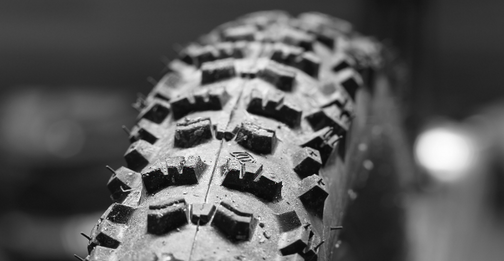
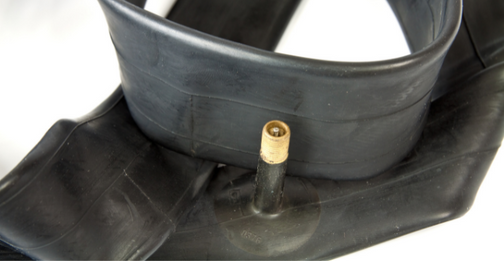
This could be a minefield to a novice cyclist - have you ever asked yourself "which is the right innertube for me?" I know I have. However, it's actually not that difficult once you know what to look for.
On the side of your tyre, you'll see a series of numbers such as 700x23c as mentioned above. The first number is the diameter of your wheel and the second number is the width of your tyre. You need to match these numbers when you're looking for an inner tube. It really is that simple.
The next thing to look at is the valve. There are two types of valves that you'll see on inner tubes: Presta and Schrader (also known as American). The difference is in the size of the hole in your wheel rim. If you have a Presta valve, you'll need a Presta inner tube and if you have a Schrader valve, you'll need a Schrader inner tube.
The last thing to consider is the size of the inner tube. Inner tubes come in different sizes depending on the width of your tyre. The wider your tyre, the larger the volume of air that it can hold and therefore the larger the inner tube.
If you're still unsure, pop into your local bike shop and they'll be more than happy to help you out.
Believe it or not, there are a number of different handlebars you could buy too. You have "flat bars", "drop bars", "aero bars" and "bullhorn bars".
Flat bars are the standard handlebars that you see on mountain bikes and some road bikes. They're great for cycling on paved surfaces and for general riding around town.
Drop bars are the type of handlebars that you see on most road bikes. They allow you to get into a low and aerodynamic position when you're cycling and are great for longer rides.
Aero bars are handlebars that you see on time trial bikes and some road bikes. They allow you to get into an even lower and more aerodynamic position than drop bars.
Bullhorn bars are a mix between flat bars and drop bars. They're great for cycling on paved surfaces and for general riding around town, but they also allow you to get into a low position when you're cycling.
There are a few other things to consider when you're buying handlebars such as the width of the bars and the material that they're made from. However, we'll leave that for another day.
When you sit comfortably in the saddle, you should be able to easily reach the tops and brake hoods on a road bike, or the grips on a mountain bike. Your elbows should be slightly bent, not locked. And the lean of your torso should be supported by your core in a comfortable position.
If you're buying a road bike, the general rule is that you should be able to stand over your bike with about two inches (five centimeters) of clearance between you and the top tube.
On a mountain bike, you should have about an inch (two and a half centimetres) of clearance.
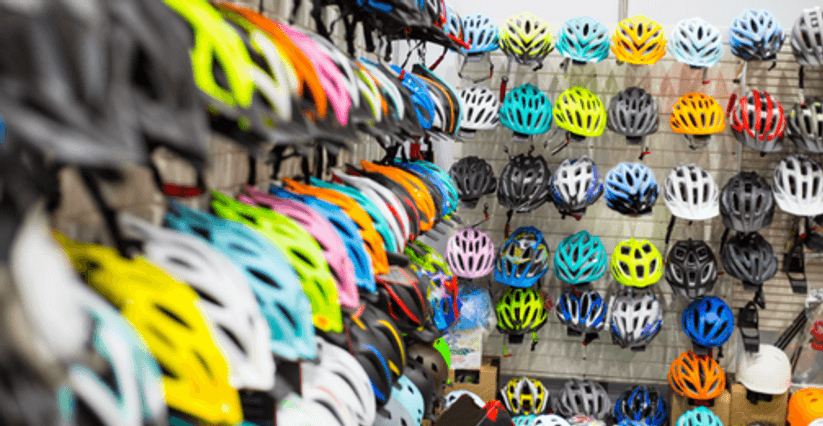
As with everything nowadays, there is an abundance of choice when it comes to bike helmets. You have road helmets, mountain bike helmets, aero helmets and even helmets specifically designed for triathlons.
The type of helmet that you buy will depend on the type of cycling that you're doing and then what budget you have to spend.
The most important thing to look for in a helmet is that it meets the safety standards that are set by your country. In the UK that's BS EN Standards and in the US that's CPSC Standards and in Europe, it's the CE EN-1080 standard.
Once you've found a helmet that meets the safety standards, then you can start to look at other features such as ventilation, weight and adjustability.
You should also make sure that the helmet fits you properly. The best way to do this is to go into a bike shop and try on a few helmets.
Your place of work may have a cycle to work scheme which could help you buy a bike and cycling equipment with tax benefits. The Cycle Scheme (UK) is an independent not-for-profit organisation that helps people to cycle to work by providing salary sacrifice schemes for bikes and cycling equipment. Cyclescheme has helped over half a million people get on their bikes since 1999, saving them an average of £473 a year on the cost of cycling.
If your workplace doesn't have a cycle to work scheme, there are plenty of retailers that can help you buy the right bike and cycling equipment for your needs.
Phew, that was a lot of information! I hope this has helped to answer some of the questions you may have had as a beginner cyclist and offers some advice of what to look for when buying your first bike. If not, pop into your local bike shop and they'll be more than happy to help you out. Or, if you're free this coming weekend, head to the National Cycling Show at the NEC in Birmingham where there will be experts on hand to answer your every cycling need or question.
Until next time, happy cycling! :)
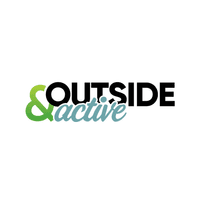
Outside & Active is the home for those who love the outdoors. Our mission is to inspire, inform and educate people about being active outdoors in a fun, safe and sustainable way. We provide inspiration, kit, tech and advice on adventure, camping, climbing, cycling, hiking, running water and winter.
Most recent articles by Outside & Active

Brooks supports trail runners to defy limits and empower their trail runs with the new Cascadia 18. The adaptable Cascadia combines DNA Loft v2 cushioning with TrailTack Green grip and a durable upper mesh to handle all terrains, providing necessary comfort and underfoot security on each surface.

Connectivity makes eBiking more customised, convenient and secure.

Various app solutions, interfaces and services as the next step for the eBike experience of tomorrow
Most recent articles in CYCLING

Connectivity makes eBiking more customised, convenient and secure.

Various app solutions, interfaces and services as the next step for the eBike experience of tomorrow

Bosch expands eShift portfolio in the smart system with TRP and Shimano gear shifting